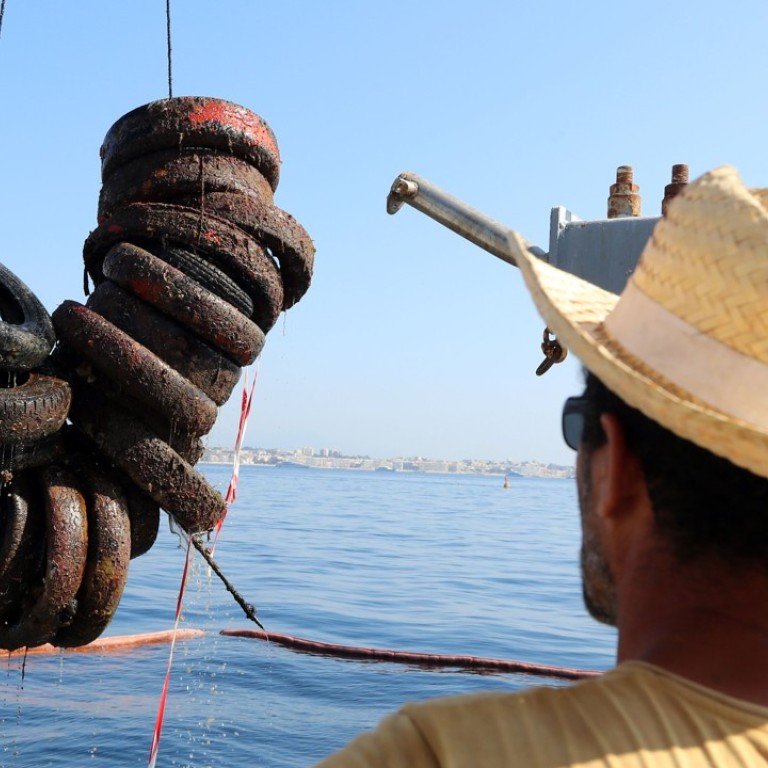
France tries to fix massive environmental flop – a sea sanctuary made of 25,000 car tyres near Cannes
Study finds France’s Mediterranean ‘tyre reef’ was leaking toxic chemicals into the environment, including heavy metals, which are a threat to human life
What seemed a like a crazy idea turned out to be just that: a 1980s experiment that saw 25,000 car tyres dumped into the crystal-clear waters of the Mediterranean to create a sanctuary for sealife off the French coast is being cleaned up after it was found to be polluting.
Since the start of last week, divers and a specially equipped boat with lifting gear have been fishing out hundreds of the old loops of rubber about 500 metres (1,600 feet) from an exclusive coastline between the towns of Cannes and Antibes.
The original vision, backed by local French authorities at the time and fishermen, was that the tyres would become populated by coral and other sea creatures in a conservation area where fishing was off limits.
In France, the idea of a “tyre reef” was tried only here, but a local academic working on the clean-up operation said authorities in other countries, particularly the United States, had tried the same failed idea.
“We hoped (back in the 1980s) that we could restore aquatic life there, but it didn’t work,” the deputy mayor of Antibes, Eric Duplay said.

“It turns out that the tyre reef was not a prolific place for biomass.”
Denis Genovese, the head of an association of local fishermen, confirmed that most Mediterranean lifeforms had shunned the idea of living inside man-made products manufactured out of rubber, resins, oil and other chemicals.
Sedentary creatures such as the local scorpion fish didn’t use them, Genovese said, while “grouper fish, conger eels and sea bream swim around them, but no species really got used to it”.
Worse, a study in 2005 by researchers at the University of Nice showed that the tyres were leaking toxic chemicals into the environment, including heavy metals, which are a threat to human life.
Authorities were also worried that the tyres could degrade further, nearly 40 years after they sank to the seabed, and break up into smaller pieces which would be a risk for nearby seagrass meadows.

In 2015, a first mission to remove 2,500 tyres was undertaken to show that they could be extracted safely, with the work under way at the moment a second and more important phase of the clean-up operation.
Around 10,000 are set to be lifted by the divers and boat crew over the next few weeks, with the remaining 12,500 extracted in the second quarter of 2019.
The tyres will be sent to the nearby city of Nice and then to recycling centres where they will be broken up into granules that can be used in construction projects.
“After that we’ll leave the seabed to restore itself naturally,” said marine scientist Patrice Francour from the University of Nice, who is working on the issue.
Francour said the clean-up would end France’s one and only experiment with a “tyre reef”, but that other countries still had to deal with the legacy of the failed idea, notably the United States.
A million euros has been provided by the French state to finance the French clean-up, while French tyre company Michelin has contributed €200,000 (US$235,000 dollars).

.png?itok=arIb17P0)